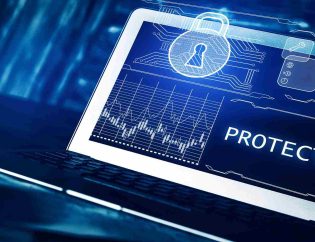
Introduction
What is EDR security? EDR, or Endpoint Detection and Response, is a cybersecurity solution designed to detect, investigate and respond to potential threats on endpoint devices. In an era where cyberattacks are becoming increasingly sophisticated, understanding EDR security and its role in protecting data and infrastructure is crucial for all organizations.
What Does EDR Stand for in Cyber Security?
EDR stands for Endpoint Detection and Response in cybersecurity. This technology focuses on monitoring and securing endpoint devices such as computers, mobile phones and servers. Unlike traditional antivirus programs, EDR solutions provide continuous monitoring and comprehensive insights into potential threats that may bypass basic security measures.
Why EDR Matters:
How Does Endpoint Detection and Response Work in Cybersecurity?
How does endpoint detection and response work in cybersecurity? EDR solutions use advanced monitoring tools and algorithms to observe activities across endpoints. Here’s a breakdown of how EDR works:
Data Collection:
EDR agents gather data on endpoint activities, including file changes and user behavior.
Threat Detection:
The collected data is analyzed to identify suspicious or malicious activity.
Automated Response:
EDR can trigger automatic actions, such as isolating an endpoint or alerting security teams.
Investigation and Remediation:
Security teams can use EDR tools to investigate incidents and take appropriate remediation steps.
Why is Endpoint Detection and Response Important?
Why is endpoint detection and response important? With the rise of sophisticated cyberattacks targeting endpoint devices, having an EDR solution is crucial for maintaining a strong cybersecurity posture. EDR ensures that potential threats are identified early, reducing the risk of data breaches and minimizing damage.
Benefits of EDR Solutions:
What Does Endpoint Detection and Response Do?
What does endpoint detection and response do? EDR provides advanced monitoring and response mechanisms that surpass traditional antivirus software. EDR continuously monitors endpoint devices, collects data and uses this information to detect and respond to suspicious activities in real-time.
Dot Bullet Points:
Key Benefits of EDR Security
1. Proactive Threat Detection
EDR identifies potential threats early, preventing them from escalating into major incidents.
2. Automated Response
Automated responses can isolate compromised endpoints and prevent the spread of malware across the network.
3. Enhanced Endpoint Protection
By leveraging threat intelligence, EDR provides robust defense mechanisms that keep endpoints secure from advanced threats.
Numbered List on Key Benefits:
Customer Testimonial
“Implementing EDR security with Hyper Secure has transformed our threat response capabilities. The real-time monitoring and automated responses have greatly enhanced our endpoint protection.”
— Michael Stevens, IT Manager
How Hyper Secure Can Help
At Hyper Secure, a Cybersecurity Services Company, we offer comprehensive EDR security solutions tailored to your organization’s unique needs. Our EDR services provide continuous monitoring, proactive threat detection and automated responses to ensure your endpoints remain secure. Partner with us to enhance your cybersecurity and protect your business from advanced threats.
Conclusion
Understanding what is EDR security is essential for organizations aiming to strengthen their cybersecurity strategy. With real-time monitoring, automated responses and advanced threat detection, EDR security plays a vital role in safeguarding endpoint devices. At Hyper Secure, an Endpoint Security Company, we help businesses implement robust EDR solutions to maintain a secure and resilient digital environment.
FAQs
1. What is EDR security?
EDR security refers to a system that monitors, detects and responds to threats on endpoint devices, enhancing overall cybersecurity.
2. What does EDR stand for in cyber security?
EDR stands for Endpoint Detection and Response, focusing on protecting endpoint devices from cyber threats.
3. How does endpoint detection and response work?
EDR works by collecting data, analyzing endpoint activities, detecting threats and triggering automated or manual responses to neutralize potential risks.
4. Why is endpoint detection and response important?
EDR is essential for identifying and responding to sophisticated cyber threats early, minimizing damage and improving security.
5. What is endpoint detection and response (EDR)?
Endpoint detection and response (EDR) is a cybersecurity solution that provides real-time monitoring and response capabilities for endpoint devices.








